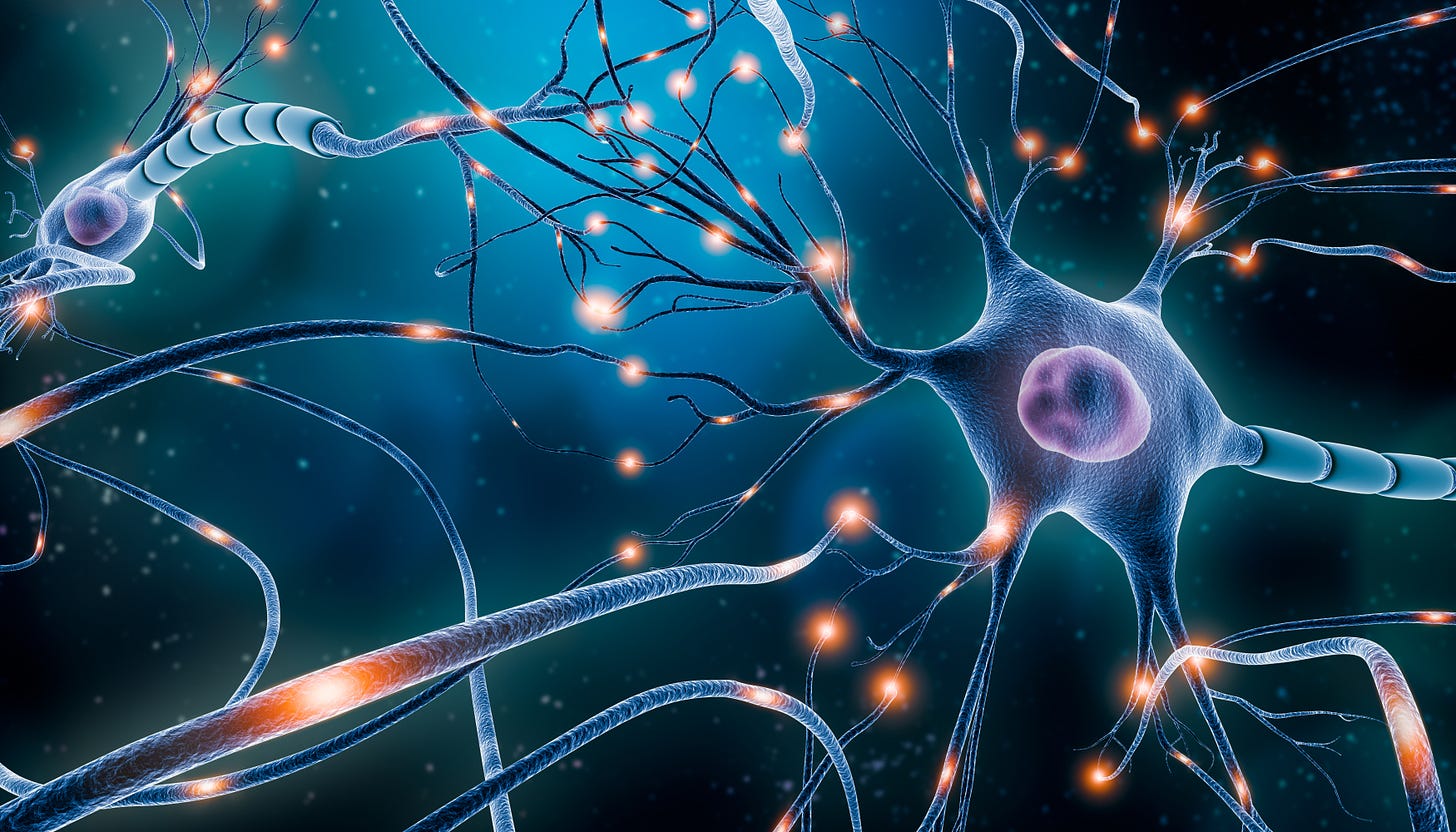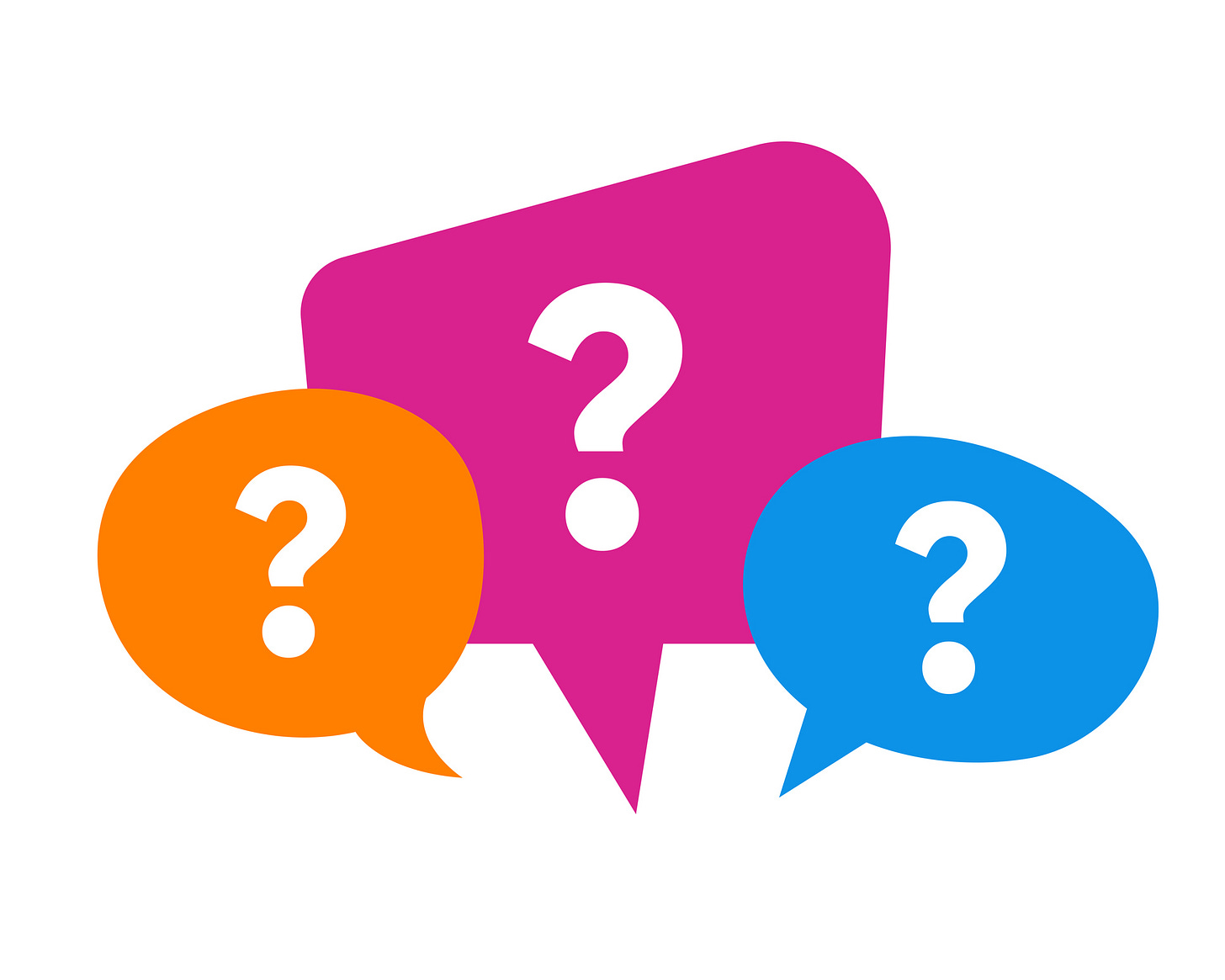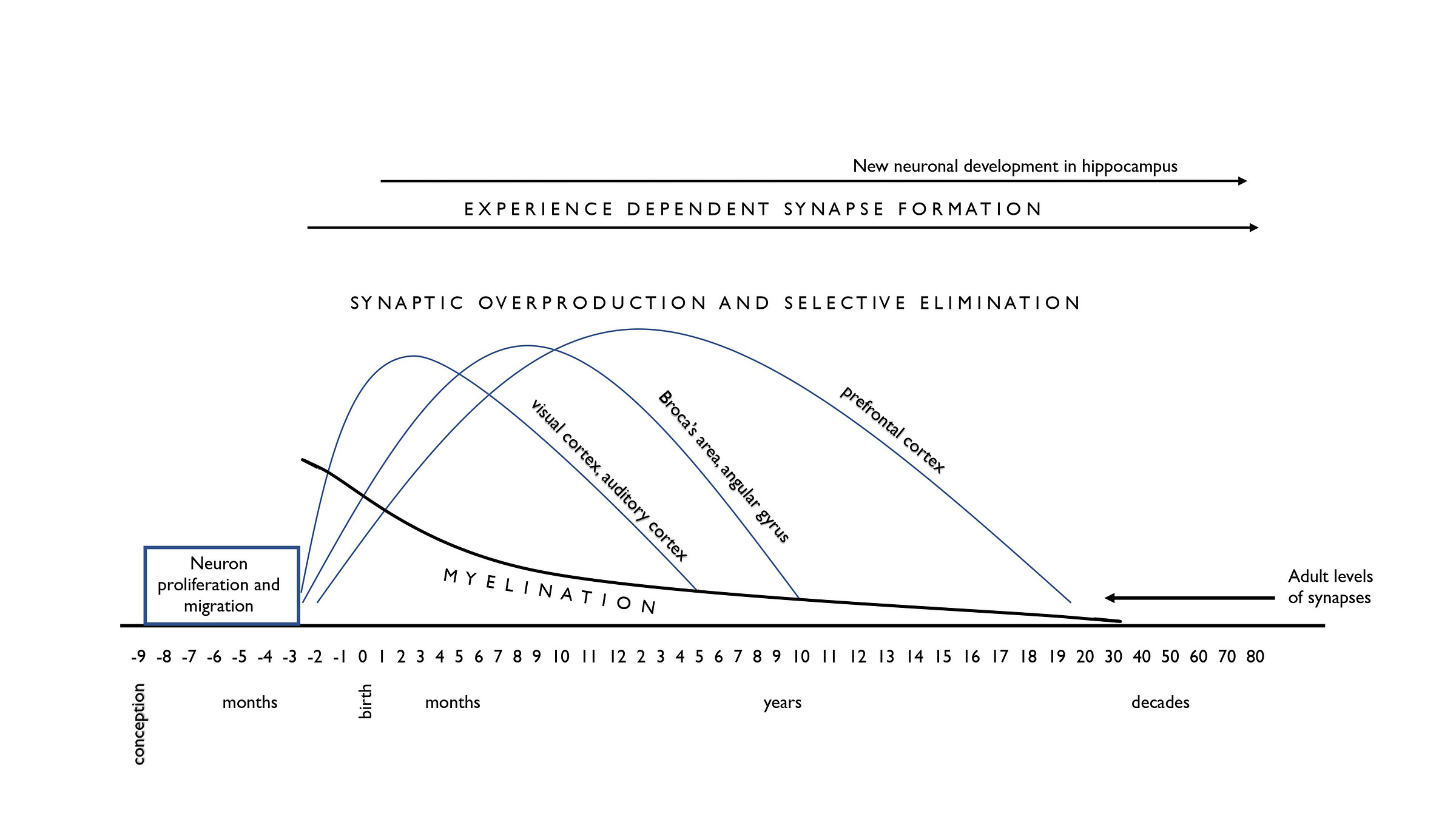It’s always challenging to introduce the topic of intelligence. Some people may feel it is a way to categorize and distinguish people based on something they cannot control.
After all, the physical development of our brain is linked to our genes and our early environment, over which we have no control.
Twin studies have revealed that identical twins have highly correlated intelligence scores compared to fraternal twins with less correlated scores. They are also more highly correlated in relation to assessments that measure language, mathematics, and reading.
These results suggest that the variance in intelligence is linked to genetics and that genetics may play a larger role than environmental factors in determining individual intelligence. (Plomin R, 2015.)
However, no one has an ‘intelligence gene’ because intelligence is not controlled by a single gene but via a complex interaction of several genes - a polygenic phenomenon - and over 500 genes are thought to impact intelligence. (New Scientist - UK Biobank Data, 2018.)
Identical twins raised separately have a lower correlation between scores compared to those of identical twins raised together, which suggests that the environment also impacts intelligence directly.
In addition, school attendance does impact intelligence scores, and children who were breastfed have higher intelligence scores in middle age. (Kaufman AS, 2006; Horta BL 2015.)
Therefore, our genes AND our environment, which includes our early diet, impact our intelligence. There’s an epigenetic effect, in which our genes AND our environment determine how our genes are expressed.
In addition, maybe people equate character with intelligence, but this is not reasonable either because character is linked to our behavior and moral reasoning. In contrast, intelligence is linked to an ability to acquire and apply knowledge and skills, abstract reasoning, and decision-making.
It is possible to be morally bankrupt and intelligent, and I’m sure we’ve all encountered people who fit this mold; however, research doesn’t support the idea that many evil people are also intelligent. (O’Boyle EH et al, 2013.)
Regardless, it’s a topic that has mesmerized us ever since we noticed that some people grasp a complex topic quickly while others need a little longer or need it explained.
And some people battle to grasp complex ideas at all.
We need different types of intelligence to support a complex and fully functioning society.
Some people are skilled at practical, concrete activities, and some have an abstract type of intelligence, which helps to design bridges, buildings, and airplanes and takes us into space.
Whether we like to discuss intelligence or understand it fully, we do know that:
‘It is one of the best predictors of important life outcomes such as education, occupation, mental and physical health and illness, and mortality.’ (Plomin R and Deary IJ, 2015.)
It’s therefore a topic we should address even if it’s not always comfortable to do so.
Researchers have developed theories of intelligence to explain the different types of intelligence we’ve noticed. One of the most well-recognized and intuitively understandable theory is ‘fluid and crystal’ intelligence.
‘Fluid and Crystal’ Intelligence
Fluid and crystal intelligence theory separates the ability to reason and think flexibly with the accumulation of facts, knowledge and skills.
Raymond Cattel, John Horn and John Carrol were the researchers who developed this theory and proposed that these different types of intelligence work together to produce our individual intelligence, or ‘general intelligence.’
This well-respected and accepted theory is based on a large body of evidence that spans over seven decades.
The word ‘fluid’ describes the type of intelligence that relates to the ability to perceive connections between previously independent factors. In other words, it allows one to think in abstract terms, reasoning around these terms to create new ideas and solve challenges related to them.
Think of fluid intelligence as the brain's ability to form and then manipulate mental representations via abstract reasoning – it’s therefore based on the brain's ability to support adaptability and agility.
These researchers saw this cognitive capacity as being separate from experience or education. However, it’s challenging to consider how a person without specific foundational knowledge in specific areas could solve challenges related to that specific area of expertise.
For example, even if they had high levels of fluid intelligence, someone with no knowledge about how a bridge stays upright would be less likely to solve a challenge related to its structure than someone who has the required knowledge.
Conversely, abstract reasoning, such as philosophical reasoning and solving puzzles or abstract problems, can be solved without deep knowledge about a topic.
Crystallized intelligence is based on education, experience and learning. As we age, we (should) naturally accumulate more crystalized intelligence, which includes memories of how to do something or go somewhere we’ve been before, along with deep expertise in a subject/s we’ve spent significant time cognitively grappling with, for example, knowledge about how a bridge stays upright.
An interaction between a student and a professor provides an excellent example of the two types of intelligence, and what many people may miss when discussing complex topics today:
An argument between an American astrophysicist Professor, and a student, resulted in the student saying to him ‘your guess is as good as mine.’ The Professor responded, with ‘no, no, no, my guess is much, much better than yours.’ (Nichols TM, 2024.)
Respecting a person’s opinion does not mean granting equal respect to that person’s knowledge. The guesses of an experienced astrophysicist and a college sophomore are not equivalently good because of their difference in crystallized intelligence.
Fluid intelligence may decrease with age, while crystalized intelligence which refers to prior learning and education, the recall of specific facts, generally increases with age.
It doesn’t matter how much fluid intelligence an individual has or their current ability and openness to learning new things; if they don’t also have the crystallized intelligence that deep learning and experience provide, they cannot use it optimally.
‘Though each is a distinct type of intelligence, fluid and crystallized intelligence are intertwined. Crystallized intelligence is formed through the investment of fluid intelligence when information is learned.’ (Cherry K, 2022.)
Measuring intelligence – and increasing it?
Over 100 years ago, the French Government tasked two French psychologists with developing an objective assessment of intelligence. The Government wanted to be prepared by knowing early on which children would need extra support at school. This was the genesis of the famous Stanford-Binet test, the first intelligent quotient (IQ) test, which was first administered in 1904. (Becker KA, 2003).
The Stanford Binet Test is probably the most famous IQ test and examines five factors that relate to what researchers understand intelligence is comprised of:
· fluid reasoning
· knowledge
· quantitative reasoning
· visual-spatial processing
· working memory
This test has been criticized for a variety of reasons, including that it doesn’t test the full range of intelligence and is culturally biased. However, it is still amongst the most reliable standardized tests used in education and has undergone many validity tests and revisions during its 100+ year history.
Tests used in its place to assess fluid intelligence are:
• Raven's Progressive Matrices Test (RPM): a non-verbal assessment that requires a person to examine various shapes and choose between them to complete a pattern.
• Wechsler Intelligence Scale for Children measures memory, reasoning, and verbal skills and is primarily administered to children between the ages of six and 16.
• Woodcock-Johnson Test of Cognitive Abilities: measures achievement and cognitive skill and is used to assess children for advanced academic courses.
General knowledge and vocabulary tests are used to assess crystallized intelligence, while the Wechsler Adult Intelligence Scale (WAIS) is a measure of cognitive abilities developed for adults. It provides separate scores for different areas as opposed to an overall intelligence score.
Although it was believed that we could not improve our fluid intelligence, some research suggests we can, although the study had limitations. (Jaeggi SM, et al. 2008.)
So, we may not be able to increase fluid intelligence significantly, but we can improve our thinking skills and cognitive disposition to support a deeper contemplation of ideas.
When we learn how to think critically, it naturally challenges how we think versus what we think, and when we socialize with those who think differently from us and read non-fiction books about topics we’re unfamiliar with, we naturally expose ourselves to different ideas and ways of thinking.
In addition, we need to get comfortable with uncomfortable ideas, which includes being able to entertain two opposing ideas at once.
Whether our current education system fosters these suggestions is up for debate. A 2018 survey revealed that 60% of respondents had not studied critical thinking at school. (Reboot Survey, 2018.)
However, our crystallized intelligence can increase because it is based on learning and accumulated knowledge, so learning a new language or skill and acquiring new knowledge will naturally increase this type of intelligence.
Can Einstein’s brain teach us anything about fostering intelligence?
When Einstein died, many neuroscientists clamored for pieces of his brain to better understand whether his intelligence could be understood by looking at his brain.
Einstein is the poster child of notable intelligence, also called ‘genius.’ He is universally understood as having been very intelligent because he could connect abstract, complex, disparate ideas to develop theories to explain how the universe operates.
Neurophysiologically, his brain was found to be different from most of ours because his parietal lobes (the top and back parts of the brain) were 15% larger than average.
The left anterior gyrus and the supermarginal gyrus were particularly enlarged, and they’re linked to mathematical ability and visual-spatial cognition. They become active when used to make associations during tests of creativity.
However, apart from these larger areas, his brain was smaller than average, although it did have other differences that may shed some light on why his brain was so cognitively capable.
We are all born with the full complement of neurons—about 86 billion—and we don’t acquire more although we can lose them. However, we do grow connections between them, which explains how our brains acquire experience, knowledge and skills. This capacity is also called ‘neuroplasticity.’
And we know that more connections support faster communication between neurons.
See ‘Our Brain Could Be Our Worst Enemy Today’ Part 1 to understand more about neuroplasticity.
Einstein had more connections between neurons, specifically in the outer cortex, including the prefrontal cortex (PFC), the temporal lobes, and the hippocampus, the CEO of memory.
However, Einstein also had more of another, specific type of neuronal-support cells, called glial cells.
Glial cells are the unheralded heroes of the brain because they support neurons and neuronal networks. They don’t just provide oxygen and nutrients; they also speed up the electrochemical process that enables neuronal communication.
Marion Diamond, one of the researchers first in line to study Einstein’s brain, found that his left inferior parietal area, which is responsible for synthesizing information from different areas in the brain, had significantly more glial cells relative to neurons.
So, his brain had more connections, not more neurons, and more glial cells—and specific areas were larger than average brains. In addition, the increased number of glial cells in areas where connections were very dense seems to be part of the explanation for his increased intelligence. These differences provide clues to some of the factors that underpinned his intelligence.
However, Einstein was famous for his insatiable curiosity and said:
‘I have no special talent. I am only passionately curious.’ (Albert Einstein, from Letter to Carl Seelig, 1952; Gross ME, et al, 2020.)
Maybe we don’t foster imagination in the same way we used to because we now have instant boredom busters in the form of screens and smartphones that are introduced to children just when their brains are primed to form new connections.
A study with a small group of adult participants revealed a reduction in creativity with smart phone addiction although other research revealed mixed results. (Li X, et al, 2023; Müller M and Montag C, 2024.)
However, smart phone addiction is likely to impact creativity in the developing brain differently - with possible long reaching effects - because of the sensitivity of the windows of opportunistic development in the developing brain.
See Part 1 ‘Our Brain Could Be Our Worst Enemy Today’ which explains more about the sensitively, age-timed critical windows of neural development.
Is curiosity unleashed during free play and non-technological pursuits during brain development? Research in this area is scarce; however, we know that during free play, the brain is free to make new connections based on its own observations and experiences, which leads to new associations between ideas, new questions, and figuring out ways to answer them. (Gross ME et al, 2020.)
Technology is likely to restrict the range of ideas and experiences the developing brain needs to flourish because it hinders curiosity and novel ideas, replacing them with the ideas of the people producing the programs.
Fostering an environment that allows children to want to learn about the world, how they fit into it, and how they can influence it is crucial to these types of experiences. (Ostroff W, 2016.)
In addition:
‘Curiosity and curiosity-driven questioning are important for developing scientific thinking and more general interest and motivation to pursue scientific questions.’ (Jirout JJ, 2020.)
Please see Part 1 of my first post ‘Our Brain Could Be Our Worst Enemy Today’ to gain a better understanding of the importance of neuroplasticity in the developing brain:
What’s the ‘The Flynn Effect’ and ‘The Reverse Flynn Effect?’
The Flynn effect refers to the phenomenon that fluid and crystallized intelligence increased in most of the world’s population from the beginning of the 1930s. Professor James Flynn, an intelligence researcher, defined it in 1984.
Factors that have been associated with the Flynn effect are increased and longer schooling for children and parents, better nutrition and fewer childhood diseases.
So, the rising IQ scores measured a particular kind of cognition that primary and secondary education in the last century had increasingly focused on, i.e., the capacity for abstract thought.
However, by the 1990s—2000s, it seemed that ‘peak IQ’ had been reached, and a sharp decline in global IQ scores was noted, which researchers have termed the ‘Reverse Flynn effect.' (Dworak EM, 2023.)
Other researchers caution that this doesn’t mean mental ability is dropping but that people may be getting worse at taking IQ tests. However, the declines are related to verbal reasoning, matrix reasoning and letter and number series, and the decline was uniform across all sample groups independent of the test taker’s age, education level or gender. The results for spatial reasoning declines were mixed, and some researchers suggest that greater exposure to media and video games may impact spatial reasoning. (Dworak EM, 2023.)
Furthermore, although reasoning abilities may have improved, reading comprehension hasn’t improved. One source of long-term data about reading from the National Assessment of Educational Progress (NAEP) shows scores for 17-year-olds are flat since the test began in the early 1970s. (Bauerlein M, 2015.)
Flynn commented during a lecture nearly two decades ago that:
‘although today children may learn to master basic reading skills at a younger age, they are no better prepared for reading more demanding adult literature.’ (2006)
A recently published population-level research project used 13 years of cross-sectional data to examine the reverse Flynn effect. Results are based on 35 ability items, which had become part of the International Cognitive Ability Resource (ICAR) in 2006, which now includes letter and number series (added in 2011), and three-dimensional rotation items, which resulted in a 60-item composite score.
The graphs in Dworak EM et al. research illustrate the downward trend: Dworak EM et al (2023) Looking for Flynn effects in a recent online U.S. adult sample: Examining shifts within the SAPA Project, ScienceDirect, Intelligence, Volume 98.
The researchers summarized their findings in the graphs and added these five points as below:
‘The results of the analyses completed with composite cognitive ability scores and domain scores had five primary findings:
1) There was no evidence of a Flynn effect across composite ability scores but possible evidence of a reversal;
2) one domain showed possible evidence for a Flynn effect, one domain showed no differences, and the remaining domains showed evidence of a reversal of varying magnitudes;
3) lower average scores were frequently observed for more recent participants across all levels of education;
4) differences in scores were similar across gender;
5) the greatest differences in annual scores were observed for 18- to 22-year-olds and individuals with less than a 4-year college degree.’ (Dworak EM, 2023.)
What’s causing this downward trend?
Is it natural that our cognitive capacity has reached a ceiling?
Should it have stabilized versus declined if our genes and environment have not changed much?
Or has our environment changed enough to account for this decline?
Maybe this downward trend is due to us not using our brains in the same way we did when our IQ was rising?
Some research suggests that university students in the United States may be enjoying more of the social aspects of college life than focusing on academic achievements, which may be due to the increased competitiveness between educational institutions that must entice students via social activities versus academic pursuits. (Bauerlein M, 2015.)
Researchers discovered that ’36 percent of students in four-year colleges reported studying alone five or fewer hours per week - that is, less than one hour per day.’ (Arum R and Roksa J, 2011.)
More startling research revealed that 45% of students reported that in the prior semester, they did not have a single course that required more than 20 pages of writing over the entire semester; 32% did not have even one class that assigned more than 40 pages of reading per week. (Arum R and Roksa J, 2011.)
Such academic demands don’t require that a student study alone for more than an hour per day. There is no deep reflection about the words being studied. No intense neural effort is required to struggle with ideas being introduced and develop new ones concerning what’s being studied.
Another reason that some researchers suggest vocabulary and comprehension IQs have dropped is that few adolescents spend significant time interacting with adults and/or mentors. They suggest that adolescent speech isn’t as sophisticated as adult speech, doesn’t include deep discussions into social issues, or visits to bookstores, museums and other historically meaningful sites, which were historically important aspects of parenting and mentoring. (Bauerlein M, 2015.)
In other words, using the definition coined by the education researcher James Coleman in the 1950’s, we now have an ‘adolescent society,’ one in which this new societal group has unprecedented independence, spending power and peer-to-peer contact.
In addition, this new-ish stage of life, also known as ‘extended adolescence’, because it’s relevant to a five-year period (18 – 23 year old’s), is likely to have a significant impact on development and long-reaching effects.
If you’re enjoying this article please consider subscribing below:
In relation to long reaching effects Arum R, (2011) states;
‘Colleges and universities under-perform with respect to developing human capital for recent cohorts of college graduates. Individuals who have undergone four or more years of instruction and managed to graduate enter the workforce with gains on generic competencies from college inferior to those of graduates from prior decades, and they face growing competition from graduates from other developed nations. The crucial years of intellectual maturation from ages eighteen to twenty-three are not yielding the gains in knowledge, discernment, and analytical capacity that they should, and that are necessary to a productive workforce and responsible citizenry.’
The graph below shows clearly that the opportunistic neurodevelopmental trajectory of the human brain continues into early adulthood. If the brain isn’t being exposed to knowledge and different perspectives while being educated and socialized - which supports its optimal development - it cannot develop optimally.
Used with permission from Professor R Thompson; as appears in his recent book ‘The Brain Development Revolution: Science, the Media, and Public Policy,’ (2023), New York: Cambridge University Press.
Although other researchers suggest that environmental factors are the reason for the reverse Flynn effect, they are not able to pinpoint precisely what those factors are:
‘ … and our results remain consistent with a number of proposed hypotheses of IQ decline: changes in educational exposure or quality, changing media exposure, worsening nutrition or health, and social spillovers from increased immigration.’ (Bratsberg B and Rogeberg O, 2018.)
What does this mean for entering the workforce after being educated?
A 2013 Chegg (Educational support services company) report summarized the answers from 1000 hiring managers on the skills of recent college graduates. They rated them according to the following criteria - very/wholly prepared for the following tasks:
· Working on tasks independently: 58%
· Writing to sum up results: 51%
· Solving problems through experimentation: 49%
· Making a persuasive argument: 43%
However, when college students were asked the same questions, they judged themselves as very/completely prepared at much higher rates. (Bauerlein M, 2015.)
In case you think the situation has improved in the last nearly decade, more recent research suggests there is still a gap between what new employees and employers believe their competencies are, as evidenced by a National Association of Colleges and Employees (NACE) report from last year. (See below.)
NACE 2023 Student Survey and Job Outlook 2024 Survey
Used with permission: NACE’s 2023 Student Survey and Job Outlook 2024 survey, with the permission of the National Association of Colleges and Employers, copyright holder. Figure provides percentages of responding students and employers that rated recent graduates as “very proficient” or “extremely proficient” in the respective competency.
What are we doing about this situation?
A current report from ACT (American Council on Education) found that students who had completed high school during the pandemic were placed in developmental courses more often than those with similar GPA scores but who had started college before 2019. (Sanchez EI, 2024.)
A 2016 report from NCE (National Center for Education Statistics) found that more than two-thirds of community college students and 40% of undergraduates at four-year colleges completed one remedial class. (Chen X 2016.)
Remedial course offerings have been replaced in some states and systems by supplemental instruction courses to get students up to speed with their chosen college courses.
One of the primary reasons that students are struggling with their coursework is due to:
‘their inability to comprehend ‘complex texts’ such as legal opinions and modern poetry whose vocabulary and syntax are too dense and unfamiliar; Vocabulary IQ stands out as crucial to success.’ (ACT, Reading between the Lines, p.30 in (Bauerlein M, 2015.)
While in admissions:
‘ … selective institutions have reinstated mandatory standardized test requirements, which leaders say is in light of declining rigor in grading and pandemic-related learning loss that makes it hard to gauge college readiness. (Mowreader A, 2024.)
Keep in mind that fewer connections between neurons are formed when the brain isn’t exposed to new information. When the brain isn’t taught how to think critically, tolerate (and even embrace) ideas that make it feel uncomfortable, and listen to people who have different perspectives from what it’s been exposed to, it doesn’t have the opportunity to create new connections.
Please see Part 1 of my first post ‘Our Brain Could Be Our Worst Enemy Today’ to gain a better understanding of the importance of neuroplasticity in the developing brain:
Parents who are unable to entice their children’s attention away from their devices, which leads to less time communicating with their children, less time engaging with their peers in person, and less time enjoying physical activity, are depriving their children of the opportunities to engage in what are essential behaviors which support them reaching their intellectual potential.
In addition, add into this mix an educational system that has somehow become less able to teach critical thinking and/or educate the next generation for our current working needs, means that developing brains are in a less-than-optimal environment with which to reach their genetic intellectual potential.
In conclusion, our genes may provide us with our intellectual capacity or potential, but the environment determines whether we reach it.
If you enjoyed this article please consider subscribing below:
References
ACT (2006) Reading between the lines: What the ACT Revels about College readiness in reading. http://www.act.org/research/policymakers/pdf/reading_report.pdf (Cited 23 May 2024.)
Arum R and Roksa J (2011) Academically Adrift: Limited Learning on College Campuses in the state of the American mind.
Bauerlein M and Bellow A. Editors (2015) The State of the American Mind: 16 Leading Critics on the New Anti-Intellectualism; Contributions by Jean Twenge, E.D. Hirsch, Maggie Jackson, Nicholas Eberstadt, Robert Whitaker, Greg Lukianoff, David Mindich, R.R. Reno, Ilya Somin, Richard Arum, Jonathan Kay, Steve Wasserman, Dennis Prager, Gerald Graff and Daniel Dreisbach. Published by: Templeton Press (USA).
Becker KA (2003) History of the Stanford-Binet Intelligence Scales: Content and psychometrics; Stanford-Binet Intelligence Scales, Fifth Edition Assessment Service Bulletin #1 (Itasca, Ill.: Riverside Publishing).
Bratsberg B, Rogeberg O. (2018) Flynn effect and its reversal are both environmentally caused. Proc Natl Acad Sci U S A;115(26):6674-6678.
Brint S (2010) Undergraduate Time Use and Academic Outcomes: Results from the University of California Undergraduate Experience Survey. Teachers College Record, 112(9), 2441–2470.
Carr N. (2011) The Shallows: What the Internet Is Doing to Our Brains; Norton Paperback: USA.
Chen X and Simone S (2016) Remedial Course Taking at U.S. Public 2- and 4-Year Institutions: Scope, Experiences, and Outcomes - Statistical Analysis Report; Available at: https://nces.ed.gov/pubs2016/2016405.pdf (Cited: 1 June 2024.)
Cherry, K (2022) https://www.verywellmind.com/fluid-intelligence-vs-crystallized-intelligence-2795004 (Cited 20 May 2024.)
Dworak EM, Revelle W and Condon DM (2023) Looking for Flynn effects in a recent online U.S. adult sample: Examining shifts within the SAPA Project; Intelligence, Volume 98 (https://www.sciencedirect.com/science/article/pii/S0160289623000156 (Cited 12 May 2024.)
Flynn JR (Lecture) 2006; https://www.psychometrics.cam.ac.uk/about-us/directory/beyond-the-flynn-effect#toc-1 (Cited 3 May 2024.)
Gross ME, Zedelius CM & Schooler JW. (2020) Cultivating an understanding of curiosity as a seed for creativity. Current Opinion in Behavioral Sciences, 35, 77–82.
Horta BL, Loret de Mola C, Victora CG (2015) Breastfeeding and intelligence: a systematic review and meta-analysis. Acta Paediatr;104(467):14-9. https://onlinelibrary.wiley.com/doi/pdf/10.1111/apa.13139 (Cited 2 June 2024.)
Jaeggi SM, Buschkuehl M, Jonides J, Perrig WJ (2008) Improving fluid intelligence with training on working memory. Proc Natl Acad Sci USA 105, 6829–6833.
Jirout JJ (2020) Supporting Early Scientific Thinking Through Curiosity. Front Psychol. 5;11:1717.
Kaufman AS, Lichtenberger E (2006) Assessing Adolescent and Adult Intelligence (3rd ed.). Hoboken (NJ): Wiley (USA).
Mowreader A (2024) Report: Grade Inflation Highlighted in Developmental Course Placement; Available at: https://www.insidehighered.com/news/student-success/academic-life/2024/05/28/colleges-place-students-remedial-courses-based-gpa (Cited: 2 June 2024.)
Müller M and Montag C (2024) Disentangling the Link between Creativity and Technology Use: Individual Differences in Smartphone and Social Media (Over)Use; Journal of Creativity; 34 (2).
New Scientist (2018) https://www.newscientist.com/article/2163484-found-more-than-500-genes-that-are-linked-to-intelligence/ (Cited 4 May 2024.)
Nichols TM (2024) The Death of Expertise: The Campaign against Established Knowledge and Why it Matters; Oxford University Press: (NY, USA).
O'Boyle E.H, Forsyth D, Banks G.C & Story PA (2013). A meta-analytic review of the Dark Triad–intelligence connection. Journal of Research in Personality, 47(6), 789–794.
Ostroff WL (2016) Cultivating curiosity in K‑12 classrooms: how to promote and sustain deep learning; ASCD (USA).
Plomin R and Deary I (2015) Genetics and intelligence differences: five special findings. Mol Psychiatry 20, 98–108.
Reboot – Elevating critical thinking (2018) Available at: https://reboot-foundation.org/wp-content/uploads/_docs/Critical_Thinking_Survey_Report.pdf (Cited 1 June 2024.)
Sanchez EI (2024) Has the Relationship Between College Readiness Measures and Developmental Course Replacement Changed in Recent Years? ACT: Available at: https://leadershipblog.act.org/2024/05/course-placement-research.html (Cited 28 May 2024.) https://www.act.org/content/dam/act/unsecured/documents/R2334-College-Readiness-Measures-Developmental-Course-Placement-2024-05.pdf
Stanford Binet Test: https://stanfordbinettest.com/ and https://stanfordbinettest.com/all-about-stanford-binet-test/what-does-stanford-binet-test-measure (Cited 6 May 2024.)
















